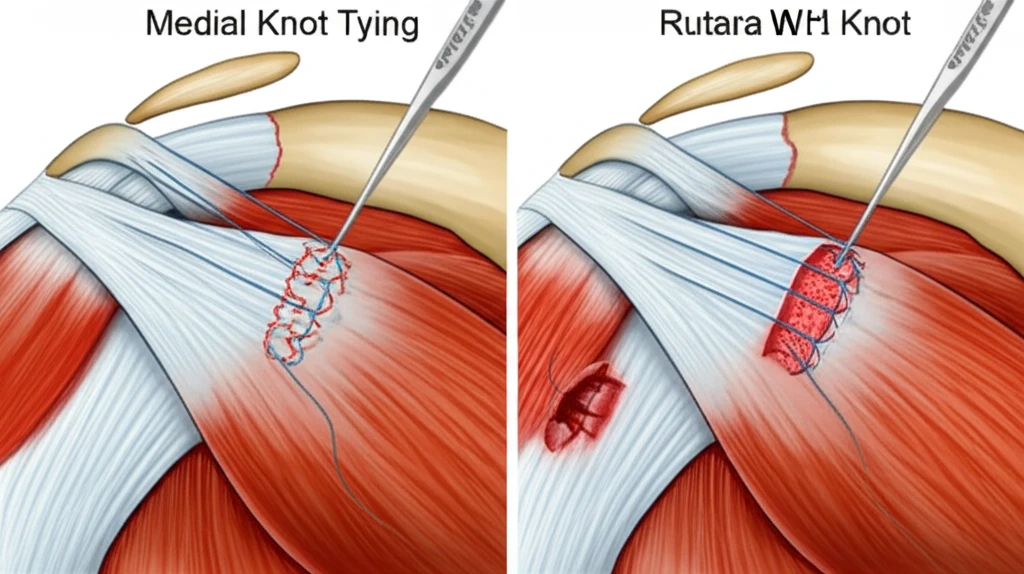
Shoulder Pain After Surgery? Unpacking the Science Behind Rotator Cuff Repair and Knot Tying
"A deep dive into the latest research: How different surgical techniques affect your recovery from rotator cuff tears."
Shoulder pain is a common ailment, often stemming from rotator cuff tears. When conservative treatments fail, surgery becomes a necessary step for many, aiming to restore function and alleviate pain. Recent advancements in arthroscopic techniques, like suture bridge repairs, have improved outcomes. However, subtle variations in these techniques, such as the use of medial knot tying, can influence the healing process and long-term results.
This article examines a recent study comparing suture bridge techniques with and without medial knot tying. We'll break down the key findings, including clinical outcomes, structural evaluations, and the implications for patients. This information will help you better understand your treatment options and what to discuss with your surgeon to ensure the best possible outcome.
Understanding the nuances of rotator cuff repair is crucial for patients. This guide aims to clarify the surgical approaches, emphasizing the importance of informed decision-making in your journey to recovery. We'll explore the evidence, providing a clear picture of the benefits and potential trade-offs associated with each technique.
Suture Bridge Techniques: A Closer Look at the Surgical Approaches

Suture bridge techniques are a common approach in arthroscopic rotator cuff repairs, designed to enhance initial fixation and promote tendon-to-bone healing. These methods involve using sutures to bridge the torn tendon to the bone, facilitating a stable environment for healing. Medial knot tying, a variation of this technique, introduces knots in the medial row of sutures, a practice that has been debated in recent studies.
- Suture Bridge Technique: Aims for robust fixation.
- Medial Knot Tying: Aims for enhanced biomechanical advantage.
- Outcomes: Clinical and structural success.
Making Informed Choices for Shoulder Health
The journey through rotator cuff repair can be complex. By staying informed about surgical techniques and outcomes, patients can actively participate in their care, leading to improved outcomes. Open communication with your surgeon is essential to determine the best approach for your specific needs. As research continues to evolve, advancements in treatment offer hope for better and more effective outcomes.
